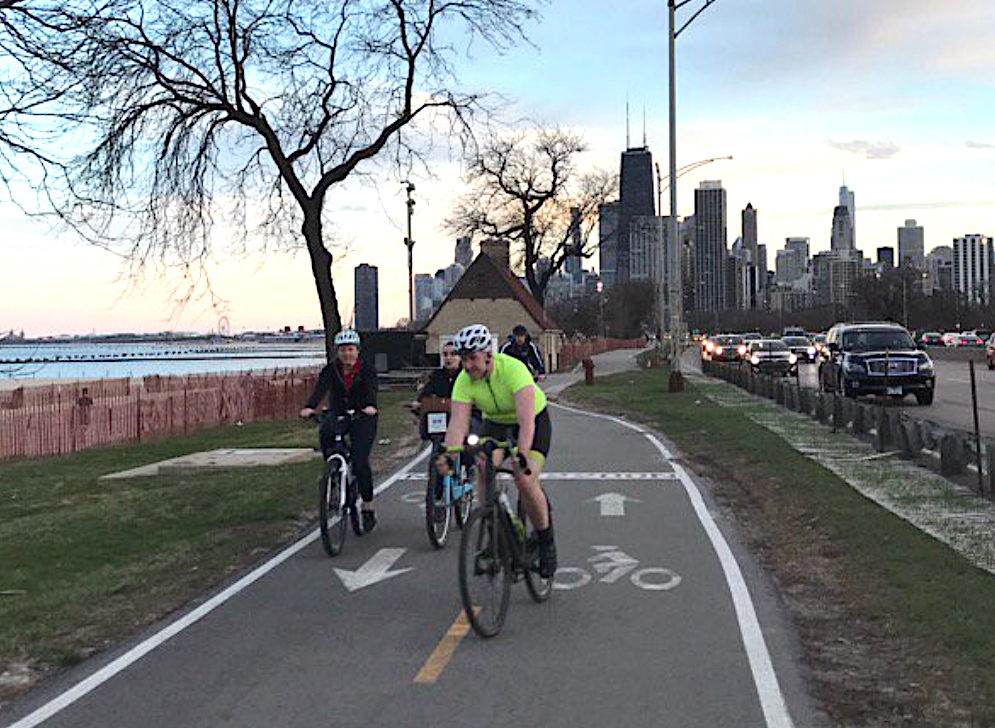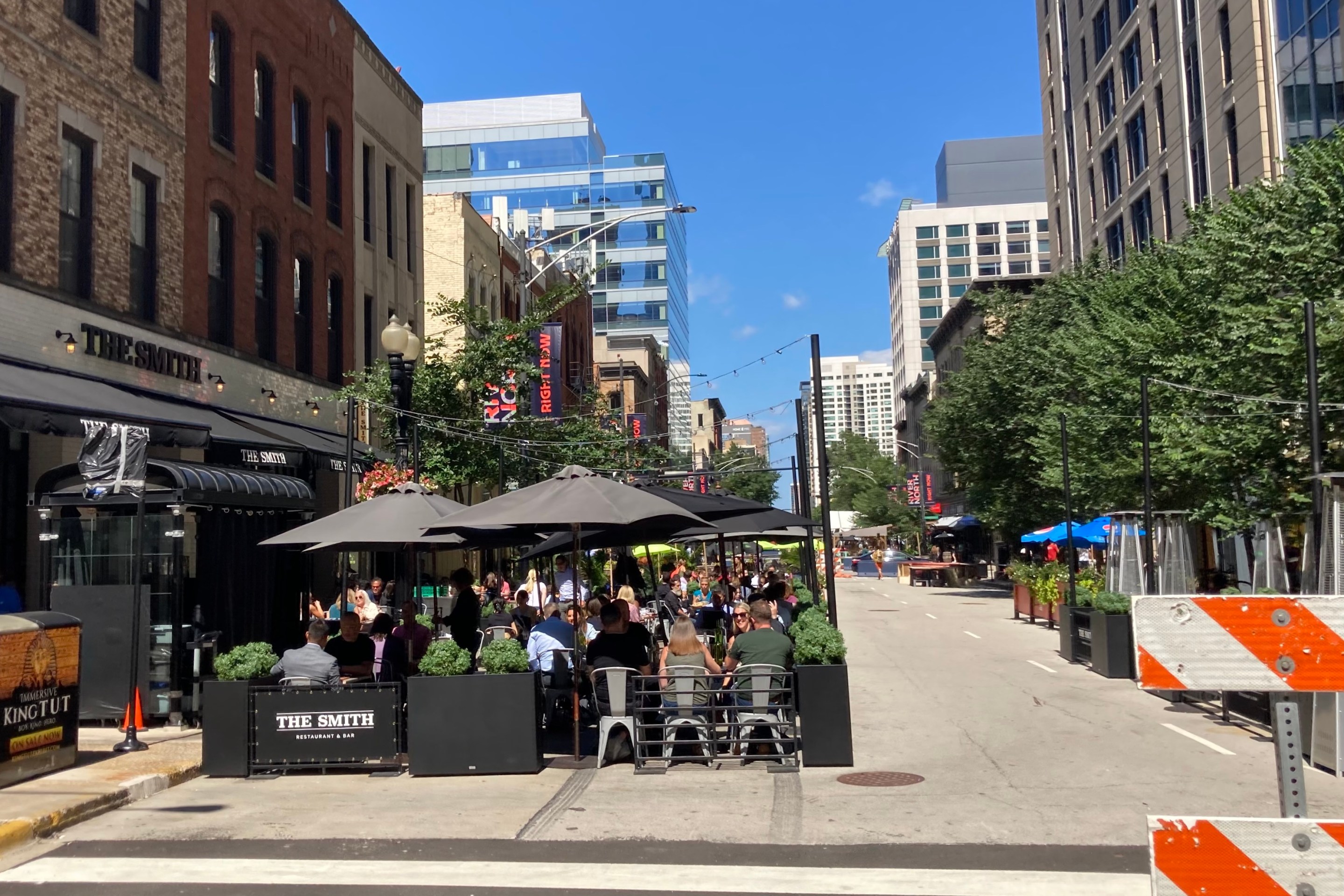After what seemed like an endless winter, it looks like it's finally warming up in Chicago. This also means more people out, and more people on bikes.
On Sunday, one of the warmer days in the last few days, my friend texted me about her long bike ride on the Lakefront Trail. While she was happy to be indulging in a ride on one of those elusive warm days, she remarked how she had forgotten how overwhelming it could be amidst all the people going at varying speeds, particularly among the ubiquitous spandex-wearing white men.
The Lakefront Trail has a special place in my heart, particularly because it’s arguably the reason I started becoming comfortable riding long distances. In college, I lived a few blocks away from the trail in Hyde Park. Over four years, riding on the trail was my study break, whether alone or with my usual college companion Anton.
In addition to being a peaceful place to ride, I also find it to be one of the more fascinating places in Chicago to see culture, race, and gender unravel. I would say the 18.5-mile path is on par with riding the Red Line from one side to the city to another. The first time I rode north of downtown with my friend, I had to get used to dealing with men on bikes who seemed to prioritize maintaining their heart rate above safety or respect for others. When not moving fast enough for their liking, I was called a “knucklehead.” It sure gave my friend and me a laugh.
In such a crowded environment as the Lakefront Trail on the Near North Side on a nice day, it can feel like a battle over who is entitled to more space than others. The Lakefront Trail separation project, which wrapped up last year, improved the situation somewhat by providing separate paths for pedestrians and cyclists. [Notably, that project was bankrolled by $12 million from hedge fund manager Ken Griffin, the richest man in Illinois, after he emailed Mayor Rahm Emanuel to complain about the state of the trail. -JG]
But it it didn’t eliminate the dynamic of competing with other cyclists for space. There's an unspoken hierarchy on the trail, in which the slower you go, it seems, the less entitled you are to space. It doesn't feel like it's OK to casually meander on two wheels.
I think that's why I always preferred to ride on the Lakefront Trail on the South Side. It was easier to feel some sense of solitude, without any pressure to keep up with bike traffic speed. That isn’t necessarily because a smaller percentage of people like to ride bikes south of downtown, but rather because the population density is lower and there are fewer access points to the trail.
Speed and its association with entitlement to space is a multi-layered issue intersecting with class and gender, because lightweight road-racing bikes are expensive, and it’s typically white males we see moving at lightning speeds on the trail. For me, it goes back to challenging the mainstream idea of who “true cyclists” are. When I ride my bike near my home, in Little Village or North Lawndale, I see Latinx or Black residents riding in mountain bikes and I remember just because they’re riding on the sidewalk or they’re going slower than me doesn’t mean they don’t deserve as much recognition as cyclists.
Granted, the Lakefront Trail represents a convergence of all types of cyclists. From the Lycra guys to young people on fixed-gears, from tourists on Divvies to families with young children, it's one of the few spaces in Chicago where people can ride bikes without the danger and stress of interacting with car traffic. It is one of my favorite parts of Chicago and I think many would agree it's theirs too.
Within the convergence of people sharing space on the trail, there needs to be intentionality. Perhaps it’s also necessary to move beyond the concept of a trail being a space we must move through as quickly as possible. Rather, the trail, however long or short a stretch or it you choose to experience, is a space where you can escape from motorized traffic. It’s a space to find peace and joy.
Many of us in Chicago, especially on the South and West Sides live in neighborhoods where safe streets for biking are hard to find. That makes car-free spaces like the Lakefront Trail so important, and that's why it's vital to always consider whether we are making room for others as we ride.

Did you appreciate this post? Consider making a donation through our PublicGood site.




